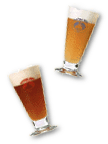Speaker 1: (07:05)
Welcome to this press conference at the Royal Swedish Academy of Sciences. [foreign language 00:09:41]. I think we will be on time, maybe one or two minutes late. Thank you.
Hans Ellegren: (17:30)
[foreign language 00:17:30]. Welcome to the Royal Swedish Academy of Sciences and this press conference, when we will announce this year’s Nobel Prize in physics. We will keep to our tradition and begin the presentation in Swedish and then continue in English. You are of course later on welcome to ask questions in either of these languages. [foreign language 00:17:54]. My name is Hans Ellegren. I’m the Secretary General of the Royal Swedish Academy of Sciences. And to my right is professor Eva Olsson, member of the Nobel Committee in Physics. And to my left, Professor Thors Hans Hansson, also member of the Nobel Committee in Physics, and expert in this field.
(18:51)
[foreign language 00:18:51]. This year’s prize is about the power of quantum mechanics. [foreign language 00:19:06]. The Royal Swedish Academy of Sciences has this morning decided to award the 2022 Nobel Prize in Physics in equal share to Alain Aspect, Université Paris-Saclay and École Polytechnique, Palaiseau, France. John F. Clauser, J.F. Clauser and Associates, Walnut Creek, California, USA. And to Anton Zeilinger, University of Vienna, Austria. They receive the price for experiments with entangled photons, establishing the violation of Bell inequalities and pioneering quantum information science. Professor Olsson will now give us a short summary, please.
Eva Olsson: (20:35)
Thank you. So quantum information science is vibrant and rapidly developing field. It has broad and potential implications in areas such as secure information transfer, quantum computing and sensing technology. Its origin can be traced to that of quantum mechanics, its predictions have opened doors to another world, and it has also shaken the very foundations of how we interpret measurements. What today is considered logical, measurable, and quantifiable was initially debated by Niels Bohr and Albert Einstein in philosophical terms. John Bell transformed the philosophical debate into science and provided testable predictions that launched experimental work. This year’s Nobel Prize in Physics honors the groundbreaking work and science of the central figures, Alain Aspect, John Clauser and Anton Zeilinger, who took up the challenges of Bell and tackled them in the laboratories. Professor Thors Hans Hansson will present the details of the work. Thank you.
Hans Ellegren: (22:13)Thank you, Professor Olson. And I’ll [inaudible 00:22:17] with Professor Thors Hans Hansson for a more detailed presentation.
Thors Hans Hansson: (22:21)
Thank you, Eva, for the introduction. Einstein, in a letter to a colleague, famously wrote, “I’m convinced that he…” And he meant God, “does not play dice.” And what did he mean with this? Quantum mechanics, the theory of atoms and life, had been immensely successful, but it was also very weird. For instance, take the simplest atom, hydrogen. Just one electron moving around the proton. Quantum mechanics couldn’t even tell you where the electron was, just the probability to find it somewhere. Einstein didn’t like that. He thought that good theory should give you precise predictions, just as Newton’s theory tells you exactly where the Moon is in its orbit around the Earth at every moment. Not everybody agreed.
(23:28)
Here are two of the founding fathers of quantum mechanics, Niels Bohr and Edwin Schrödinger. They thought that quantum mechanics was okay as it was, didn’t need anything more to just have to accept the peculiarities. And this position was put very clearly in this paper, written in 1935, by Edwin Schrödinger. It was an answer to a paper written earlier that year by Einstein Boris Podolsky and Nathan Rosen, and they had come up with the thought experiments, which they thought proved, demonstrated that quantum mechanics couldn’t be the full story. And now I will explain to you a modern version of that experiment. So here you see a source. These source emits pairs of particles, entangled pairs, Bell pairs. We’ll come back to that concept. And they reach Alice and Bob, who makes a measurement. They measure a property of these particles that is called spin.
(24:43)
And in quantum mechanics, this spin can only take two values, plus or minus. So what happens when you do it many times? Alice will see a sequence of pluses and minuses. Plus, minus, plus, plus, minus, minus, plus, et cetera. Looks completely random. And the same is true for Bob. But the strange thing is that when they compare the measurements, every time Alice sees a plus, Bob will see a minus and vice versa. And that’s very strange because they are far away from each other and these articles look exactly the same. Well perhaps, let’s look at it. Here we have the quantum cards. They look all the same, huh? We shuffle them or entangle them. And then here they go, and they can answer questions on signs. What sign do you have? Plus. What sign do you have? Minus. Okay. Let’s take another set of quantum cards. Here they go. What sign? Plus. What sign? Minus. Hmm. Strange. They look the same. How could they know what sign they had? Well, you see, here it is a trick. That is the following thing. Look, that was a minus and that was a plus. So each entangled pair had one plus and one minus. I [inaudible 00:26:19] whether the minus went there or there, but it was always one plus and one minus. So could it be that quantum mechanics was the same? Could it be that there were hidden information like on the cards? Could it be that nature was a trickster, just like I was before? Perhaps quantum mechanics is not complete. Perhaps there is something hidden. Einstein would have liked that, and it’s a very natural way to think that it would be like that. But years went on, decades went on. No one found such a theory that could explain the experiments with such hidden variables. So this became something more of a philosophical question.
(27:10)
Most physicists didn’t care very much, until in 1964, John Bell made an amazing theoretical discovery by looking at a variation of this experiment that I have told you about. He could show that in that case the predictions of quantum mechanics couldn’t be reproduced by any kind of theory based on hidden variables, however complicated. And when you think of it, that’s really strange because that means that when you measure on one of these particles, it’s not so that you asked to reveal a property that is already there and measure it. No. The quantum information about the state is in the full entangled state of both particles. Indeed, very strange.
(28:09)
And so thought the young John Clauser who said, “Ah, let’s do Bell’s experiment. Let’s perform it in the lab. Perhaps quantum mechanics isn’t right in that situation.” Now, that was easy to say, not so easy to do because with the existing lab equipment you couldn’t perform that experiment. But with collaborators, he came up with a variation of the experiment that could be performed. And he and the late Stewart Friedman went to the lab. They did it. And they found that quantum mechanics works also in this case.
(28:52)
Now, there were loopholes. And one particular loophole that John Bell had been very concerned about was that of locality. That means that Alice shouldn’t be able to send signals to Bob, so they could sort of agree on the result of the measurements. And that was hard to exclude experimentally. But in 1976, Alain Aspect wrote the paper where he proposed such an experiment, and a couple of years later went to the lab, performed the experiment, and yes, again, quantum mechanics rules. So why is this a big deal? They didn’t even know that quantum mechanics works. Well, to explain to you why it’s such a big deal, let’s go back again to 1935. Here is another paper by Schrödinger, in which he says, “I would not call entanglement one, but rather the great trait of quantum mechanics.” So now, much later in retrospect-
(30:03)
So now, much later in retrospect we understand that in addition to the profound philosophical and foundational implications of the studies of Bell states, the experiments performed by Clauser and Aspect opened the eyes of the physics community to the depth of Schrodinger’s statement. And provided tools for creating, and manipulating, and measuring states of particles that were entangled, although they were far away. And physicists now started to understand that entanglement and Bell pairs is a quantum resource that you can use to achieve amazing new things. And there’s no time here to even start to tell you that story. I will just give you one example which is picked, because it illustrates one of the many groundbreaking contributions by the third of this year’s laureates, Anton Zeilinger. So to understand this, you have to know that goal of quantum mechanics today is to build a quantum network.
(31:29)
What is that? A quantum network is a series of nodes and these nodes should be able to communicate via quantum entanglement. In these nodes you can have quantum devices like encryption devices. How do you build such a network? It’s difficult. Because entanglement is brittle. If you send it through an optical fiber, it very easily gets destroyed. So you need some new trick. And just an amplifier won’t work, because amplifiers destroy entanglement. So here is the trick, the method that Anton Zeilinger came up with. It’s called entanglement swapping. You have two of these Bell pairs like this. One of the particles, here one. And the other four goes far away from each other. The two other comes together. Here you make a measurement, so you entangle particle two and three. And then magically, one and four becomes entangled although they had never been close to each other. It’s wonderful.
(32:36)
So now you can think of doing it in a chain. You do one, you could do another, you do a third, et cetera, and you can build up a network. Another method to get long range entanglement is not to use optical fibers, but to send just light through the air. And I’ll just give you one spectacular example of this. And that was in 2018 where there was an intercontinental quantum link set up using the Chinese Micius quantum satellites between the group of Jian-Wei Pan, The Academy of Science in China, and with Anton Zeilinger’s group in Austria, over 7,600 kilometers. Pretty amazing.
(33:24)
And now we are at the forefronts of current research. And I will just end with a few comments. So today we honor three physicists whose pioneering experiments showed us that the strange world of entanglement and Bell pairs is not just the microworld of atoms, and certainly not the virtual world of science fiction or mysticism, but it’s the real world that we all live in. And researchers now all over the world, they use entanglement and Bell pairs, both in curiosity driven fundamental research and in utility driven applications, such as quantum cryptography or quantum computing. Thank you for listening.
|
|
|
|
|
|
|
|
ウィスパリング同時通訳研究会 更新情報
-
最新のアンケート
-
まだ何もありません
-
























